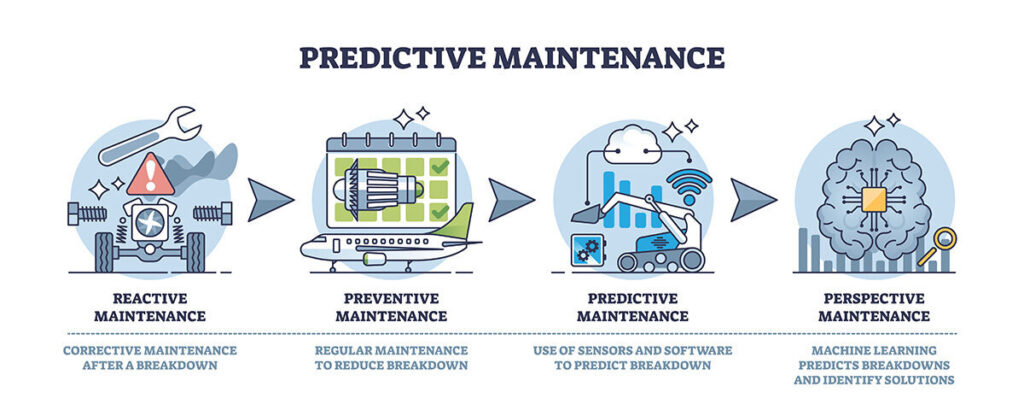Predictive maintenance leverages advanced analytics and artificial intelligence to anticipate equipment failures before they occur, enabling proactive maintenance strategies that minimize downtime and reduce costs[1]. This approach relies on continuous monitoring of machine data and the application of sophisticated algorithms to detect anomalies and forecast potential issues.
One of the key techniques used in predictive maintenance is anomaly detection. By analyzing sensor data from equipment, anomaly detection algorithms can identify unusual patterns or behaviors that may indicate impending failures[2]. These algorithms learn the normal operating conditions of machinery and flag deviations that could signify problems.
Time series forecasting is another crucial component of predictive maintenance. By analyzing historical data and identifying trends, time series models can predict future equipment performance and potential failure points[3]. This allows maintenance teams to schedule interventions at optimal times, balancing the need for uptime with the risk of unexpected breakdowns.
Machine learning techniques like support vector machines, decision trees, and random forests are commonly employed in predictive maintenance to classify equipment states and predict failures[1]. These models can be trained on labeled data sets that include both normal operating conditions and known failure modes.
Unsupervised learning algorithms are particularly valuable when labeled failure data is scarce. Clustering algorithms and density estimation methods can identify anomalies without prior examples of failure states[2]. This makes them well-suited for detecting novel or unexpected issues in complex systems.
The implementation of predictive maintenance can yield significant benefits, including:
- Reduced unplanned downtime
- Optimized maintenance schedules
- Extended equipment lifespan
- Lower maintenance costs
- Improved safety and reliability
As Industry 4.0 technologies continue to advance, predictive maintenance is becoming increasingly sophisticated. The integration of Internet of Things (IoT) sensors, edge computing, and cloud-based analytics platforms enables real-time monitoring and rapid response to emerging issues[1]. This convergence of technologies promises to further enhance the effectiveness of predictive maintenance strategies across various industries.
[1]: https://gavstech.com/blogs/anomaly-detection-for-predictive-maintenance/
[2]: https://www.knime.com/blog/anomaly-detection-for-predictive-maintenance-eda
[3]: https://llumin.com/the-importance-of-predictive-maintenance-anomaly-detection-llu/
Further Reading
1. Anomaly Detection for Predictive Maintenance | GAVS Technologies
2. Try Anomaly Detection for Predictive Maintenance | KNIME
3. The Importance of Predictive Maintenance Anomaly Detection
4. [2105.12818] Anomaly Detection in Predictive Maintenance: A New Evaluation Framework for Temporal Unsupervised Anomaly Detection Algorithms
5. ScienceDirect


